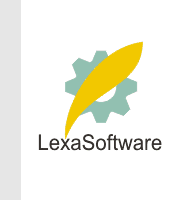Filmscanners mailing list archive (filmscanners@halftone.co.uk)
[Date Prev][Date Next][Thread Prev][Thread Next][Date Index][Thread Index]
filmscanners: Infrared scans on different films
As a followup, here's a basic comparison between several kinds of films and
their behaviour with the infrared (IR) channel. The thumbnails are tiny I
know, but they are big enough to show the important differences. In IR, the
K64 slide shows quite a bit of image detail, especially on high contrast
edges. Ilford FP4+ is very opaque to IR, with the result that it's hard to
see the dust and scratches for the image information. Fujichrome 100 is
very transparent to IR, so that dust stands out in very high contrast, the
latter being opaque. Scratches produce a much less distinct image in IR
(there is the beginning of a scratch 1/3 of the way up the right hand side
of the 1:1 sample). This means that high contrast edges and scratches
"look" very similar in IR, and probably accounts for some softening of the
image when using IR cleaning algorithms. Some grain still shows and this
also probably causes some softening. I also scanned a frame of Fuji Superia
400 and the results were similar to Fujichrome 100, but Superia is probably
even more transparent to IR. This explains why colour neg films or
chromogenic B&W work well with ICE.
What the scan of FP4 makes me realise is that if you have a lot of B&W
(non-chromogenic) film to scan, a Nikon scanner is probably a poor choice.
The Nikon will highlight every speck and scratch, and make for a lot of
spotting. However, for C41 process films, the IR channel is a life-saver.
BTW in my minimal experience with Kodachrome, Vuescan cleans K64 scans quite
well, without the artifacts of ICE (I can't speak about ICE3). In the above
tests, the "clean" filter in Vuescan had no noticeable effect on spots in
the Ilford FP4+, but then it also did *not* have any damaging effect.
>From these results I'm guessing that it's quite easy to make a very
effective dust filter, but much harder to make a very effective scratch
filter which doesn't soften the image.
The tests were done with a Nikon LS30 and Vuescan 7.0.21.
Rob
Attachment:
infra_red_comparison.jpg
Description: JPEG image
|

